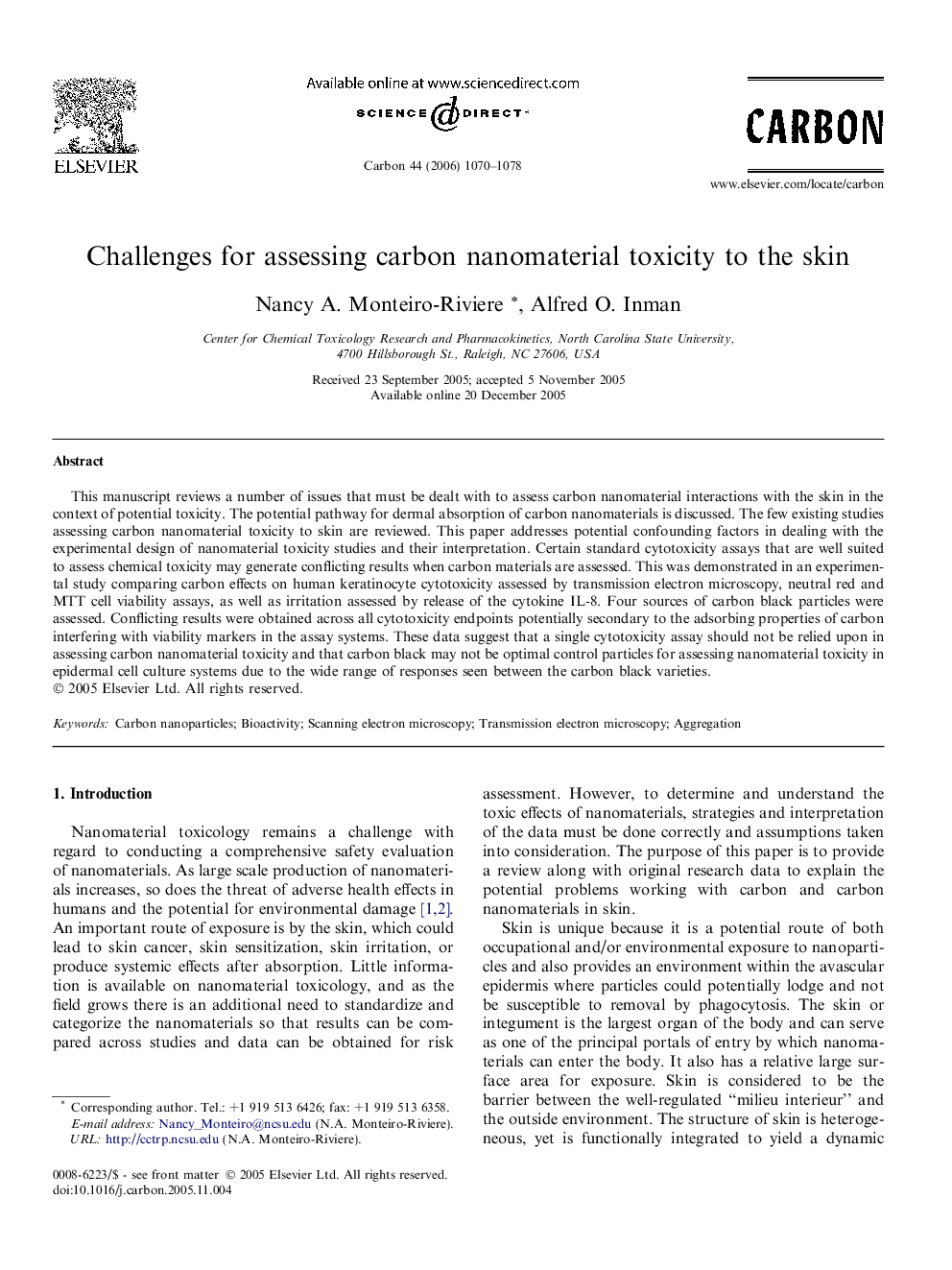| Article ID | Journal | Published Year | Pages | File Type |
|---|---|---|---|---|
| 1419303 | Carbon | 2006 | 9 Pages |
This manuscript reviews a number of issues that must be dealt with to assess carbon nanomaterial interactions with the skin in the context of potential toxicity. The potential pathway for dermal absorption of carbon nanomaterials is discussed. The few existing studies assessing carbon nanomaterial toxicity to skin are reviewed. This paper addresses potential confounding factors in dealing with the experimental design of nanomaterial toxicity studies and their interpretation. Certain standard cytotoxicity assays that are well suited to assess chemical toxicity may generate conflicting results when carbon materials are assessed. This was demonstrated in an experimental study comparing carbon effects on human keratinocyte cytotoxicity assessed by transmission electron microscopy, neutral red and MTT cell viability assays, as well as irritation assessed by release of the cytokine IL-8. Four sources of carbon black particles were assessed. Conflicting results were obtained across all cytotoxicity endpoints potentially secondary to the adsorbing properties of carbon interfering with viability markers in the assay systems. These data suggest that a single cytotoxicity assay should not be relied upon in assessing carbon nanomaterial toxicity and that carbon black may not be optimal control particles for assessing nanomaterial toxicity in epidermal cell culture systems due to the wide range of responses seen between the carbon black varieties.
